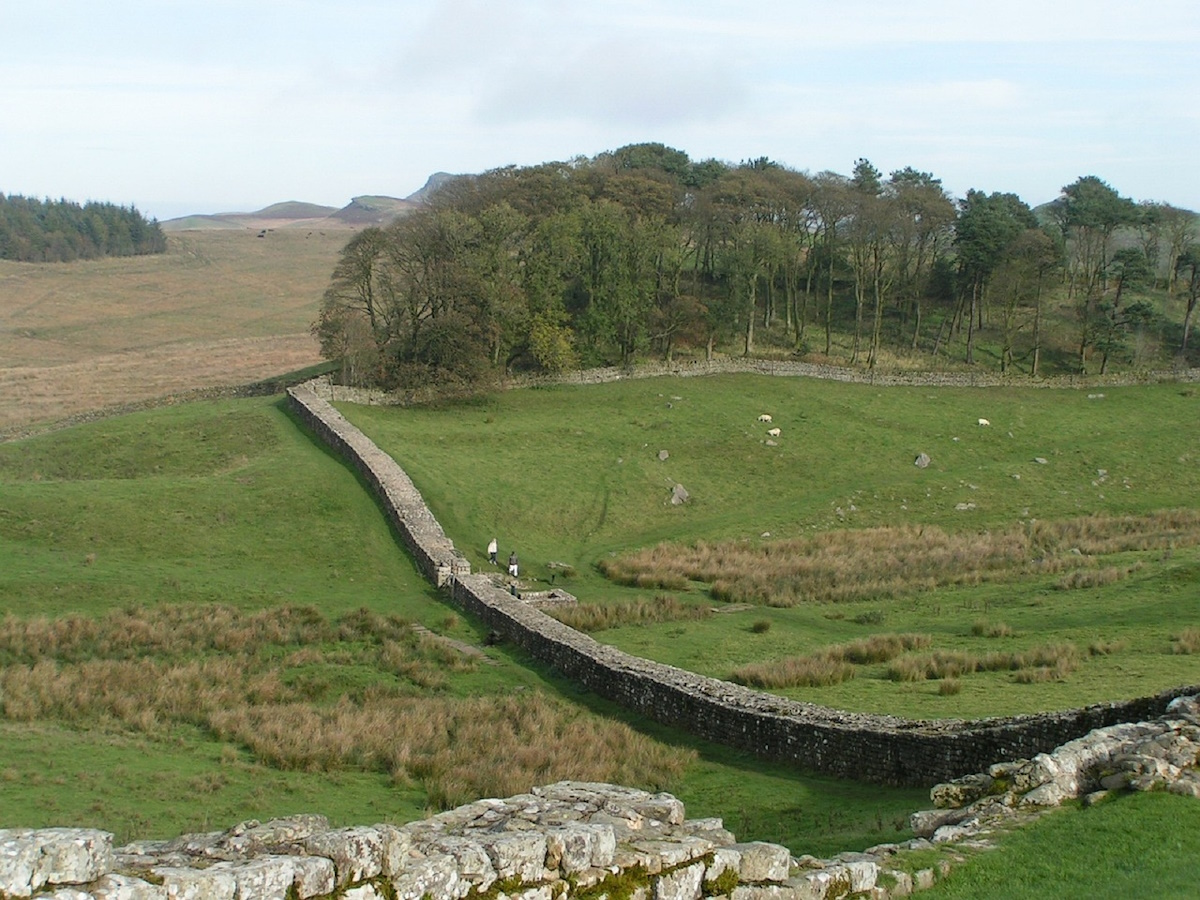The Ancient Roman Frontier
Hadrian's Wall, a UNESCO World Heritage Site, is an ancient fortification in northern England that once marked the northwestern frontier of the Roman Empire. Built under the direction of Roman Emperor Hadrian, this remarkable structure stretches for 73 miles (117 kilometers) from coast to coast across the width of northern England.

Hadrian's Wall stretching across the rolling hills of northern England
Purpose and Construction
The wall was built starting in AD 122, during the rule of Emperor Hadrian. Its primary purpose was to mark the northern limit of Roman Britain and to control movement along this frontier. The wall not only served as a military fortification but also as a means of regulating trade and immigration.
Fun Fact:
Contrary to popular belief, Hadrian's Wall did not mark the border between England and Scotland. The wall lies entirely within England, and Scotland as a political entity did not exist at the time of its construction.
Timeline of Hadrian's Wall
AD 122
Construction of Hadrian's Wall begins under Emperor Hadrian's orders.
AD 128
The majority of the wall's construction is completed.
AD 142
The Antonine Wall is built further north, temporarily replacing Hadrian's Wall as the frontier.
AD 160s
Hadrian's Wall is reoccupied as the main frontier.
5th Century AD
The wall is abandoned as Roman rule in Britain comes to an end.
1987
Hadrian's Wall is designated as a UNESCO World Heritage Site.
Structure and Features
The wall was an impressive feat of engineering for its time. It was typically 10 feet (3 meters) wide and 16-20 feet (5-6 meters) high, made primarily of stone. Along its length, the wall featured:
- Milecastles: Small fortlets spaced at intervals of one Roman mile
- Turrets: Watchtowers placed between each milecastle
- Forts: Larger military bases housing up to 1000 soldiers
- Vallum: A large earthwork to the south of the wall

Reconstructed section of Hadrian's Wall demonstrating its imposing structure
Modern-day Significance
Today, Hadrian's Wall is one of the most popular tourist attractions in northern England. It offers visitors a unique glimpse into Roman Britain and serves as a testament to the power and reach of the Roman Empire. The Hadrian's Wall Path, a long-distance footpath, allows hikers to walk the length of the wall, experiencing the beautiful countryside and rich history of the region.
Fun Fact:
The wall has inspired many works of fiction, including George R.R. Martin's "A Song of Ice and Fire" series, which features a massive ice wall inspired by Hadrian's Wall.
Conservation Efforts
Preserving Hadrian's Wall is an ongoing challenge. The wall faces threats from erosion, tourism, and climate change. Various organizations, including English Heritage and the National Trust, work tirelessly to protect and maintain this ancient monument for future generations.
Visiting Hadrian's Wall
If you're planning to visit Hadrian's Wall, here are some key sites to consider:
- Housesteads Roman Fort: One of the best-preserved Roman forts along the wall
- Vindolanda: An active archaeological site with a museum showcasing remarkable Roman artifacts
- Sycamore Gap: A picturesque spot featuring a lone sycamore tree, made famous by the film "Robin Hood: Prince of Thieves"
- Roman Army Museum: Offers an immersive experience of life in Roman Britain
Remember to dress appropriately for the weather, wear sturdy footwear, and respect the ancient monument by not climbing or walking on the wall itself.
Hadrian's Wall stands as a remarkable testament to Roman engineering and ambition. It continues to captivate visitors from around the world, offering a tangible link to an ancient past and a glimpse into the complex history of Roman Britain.